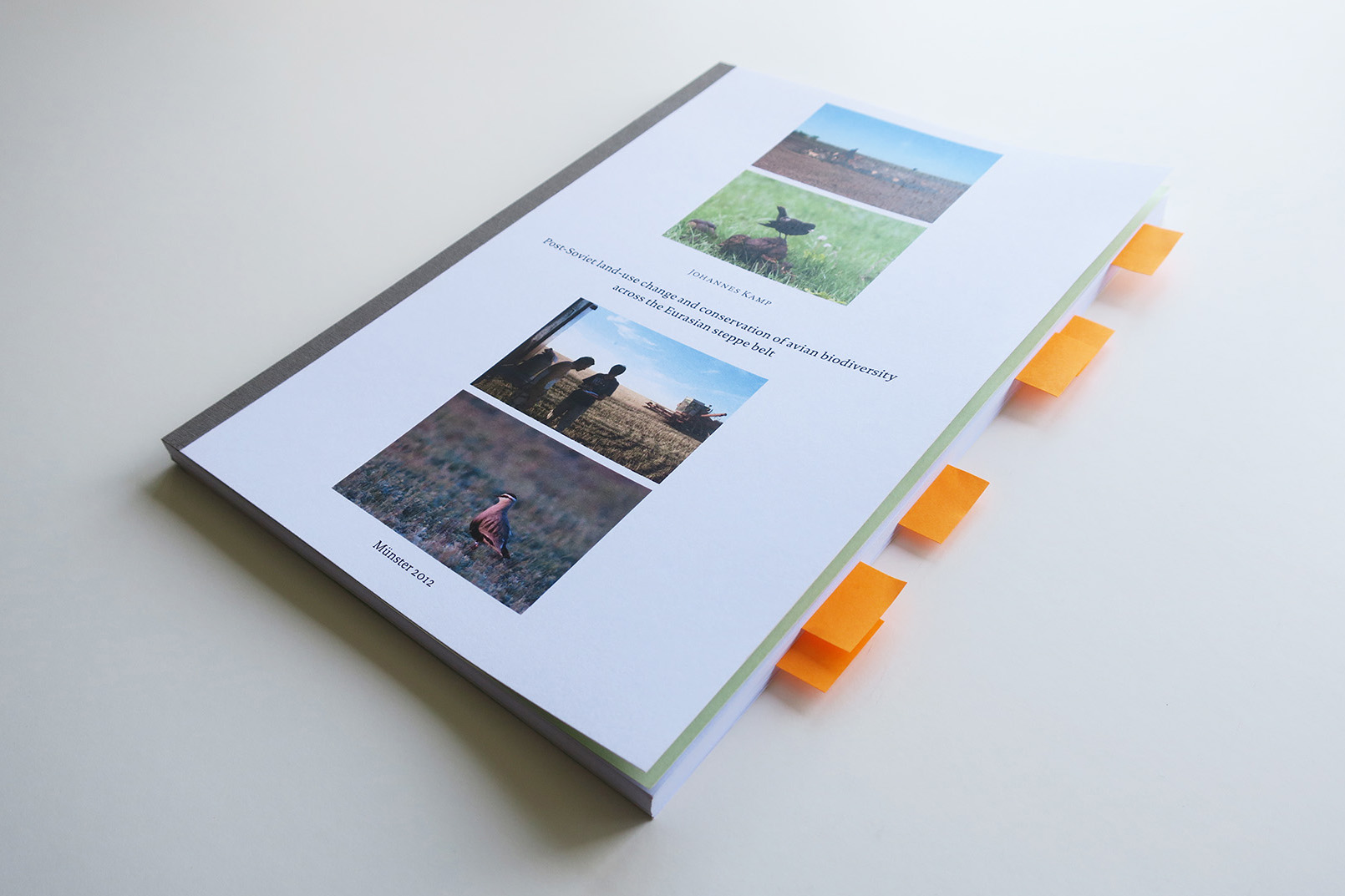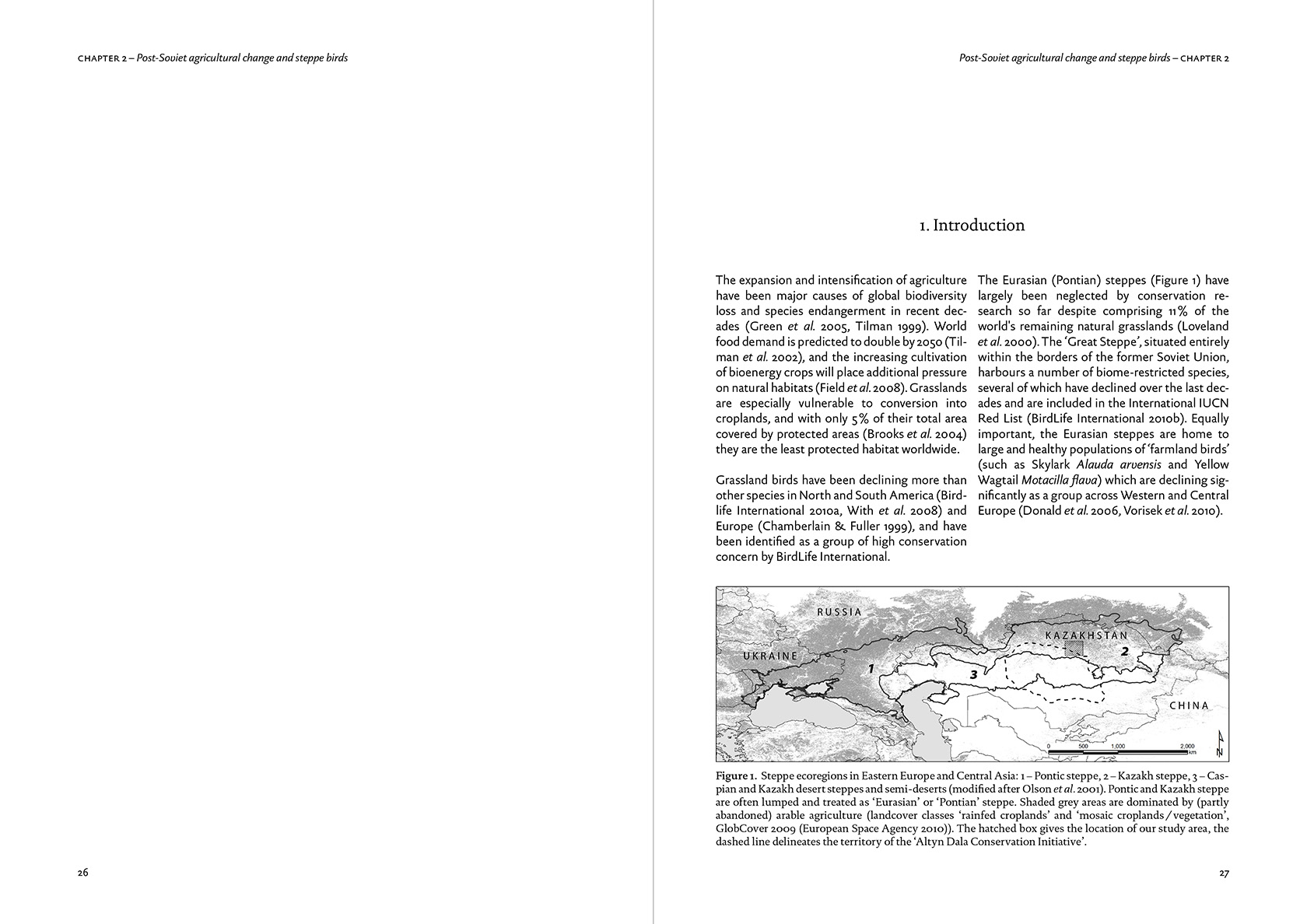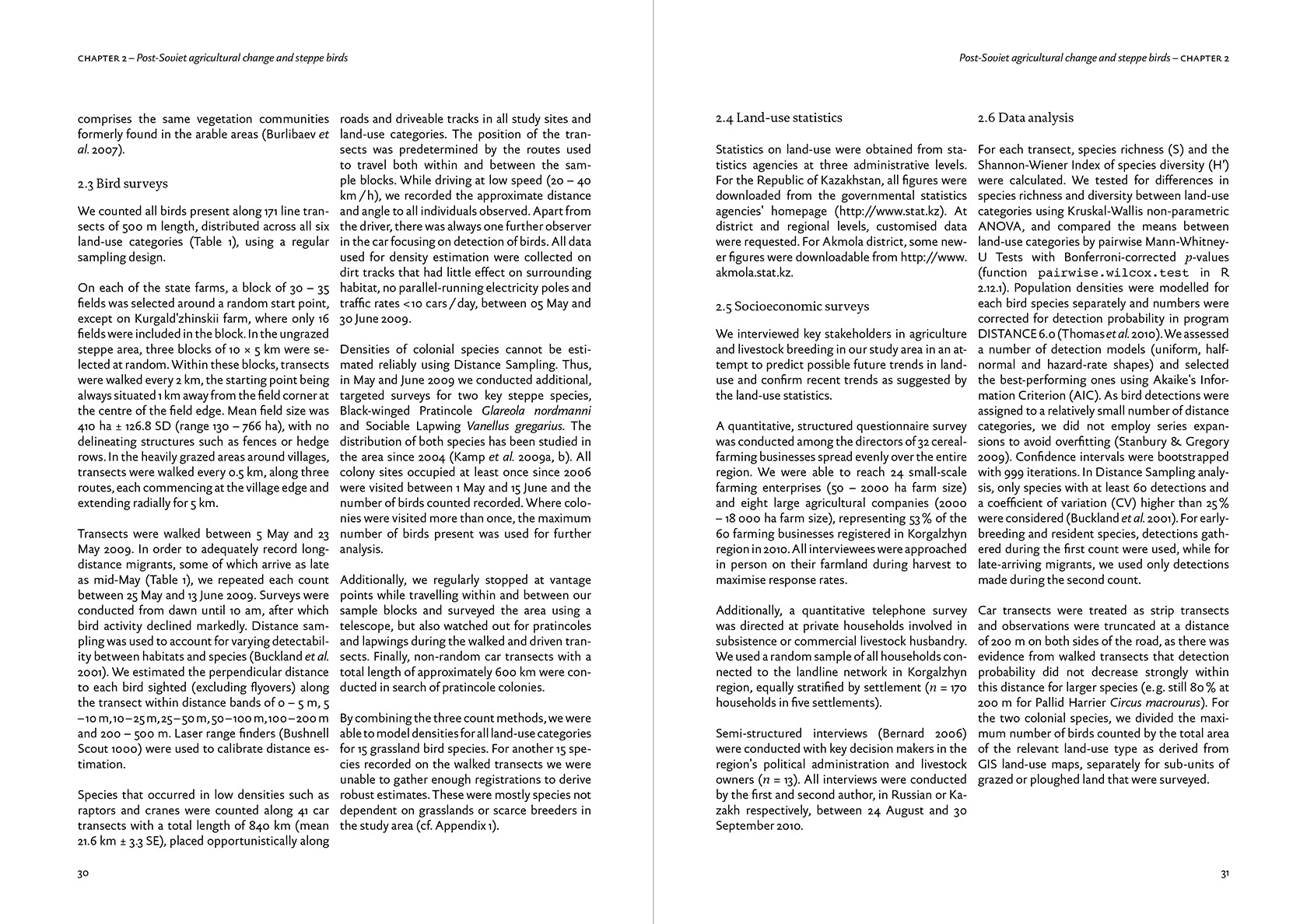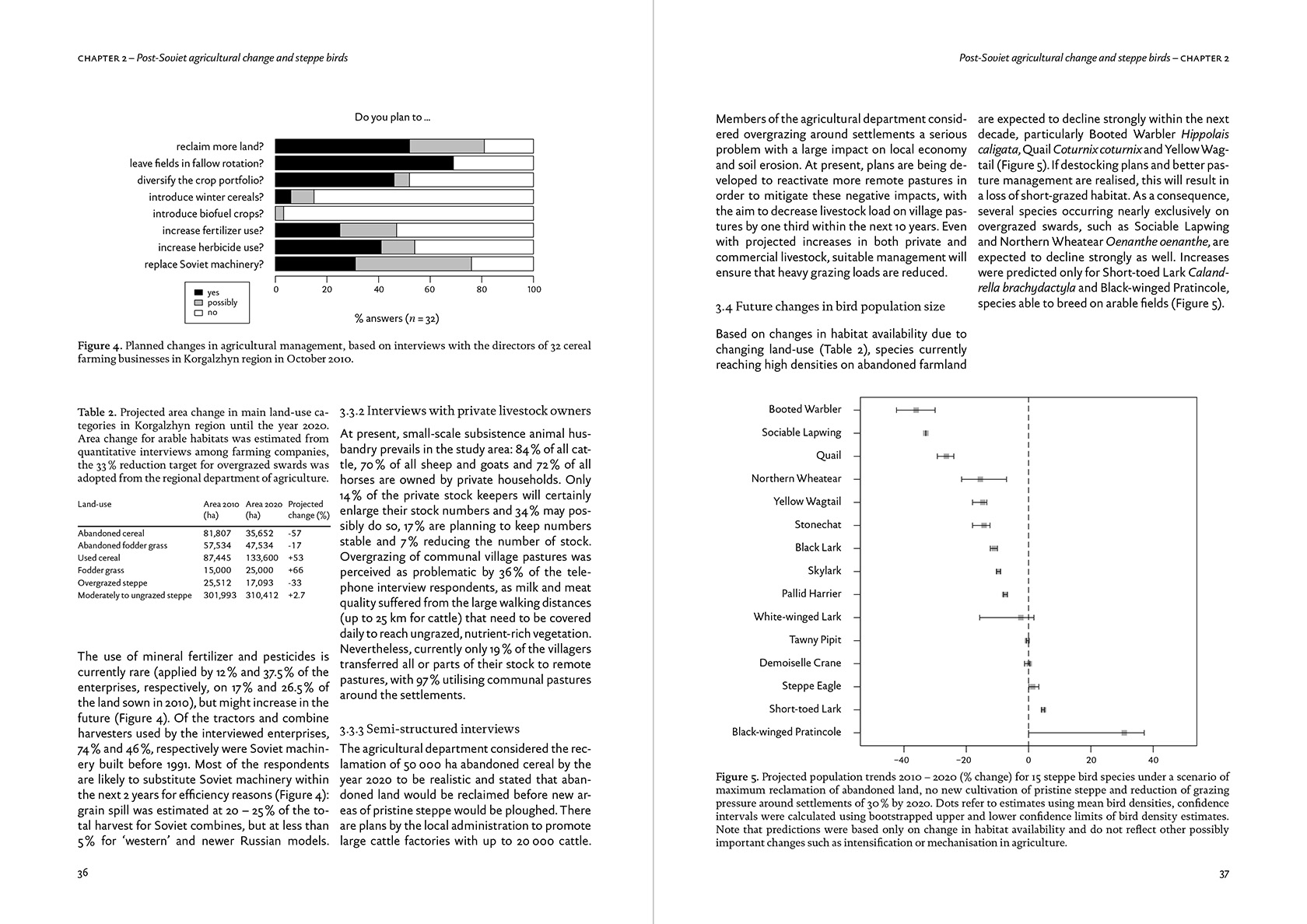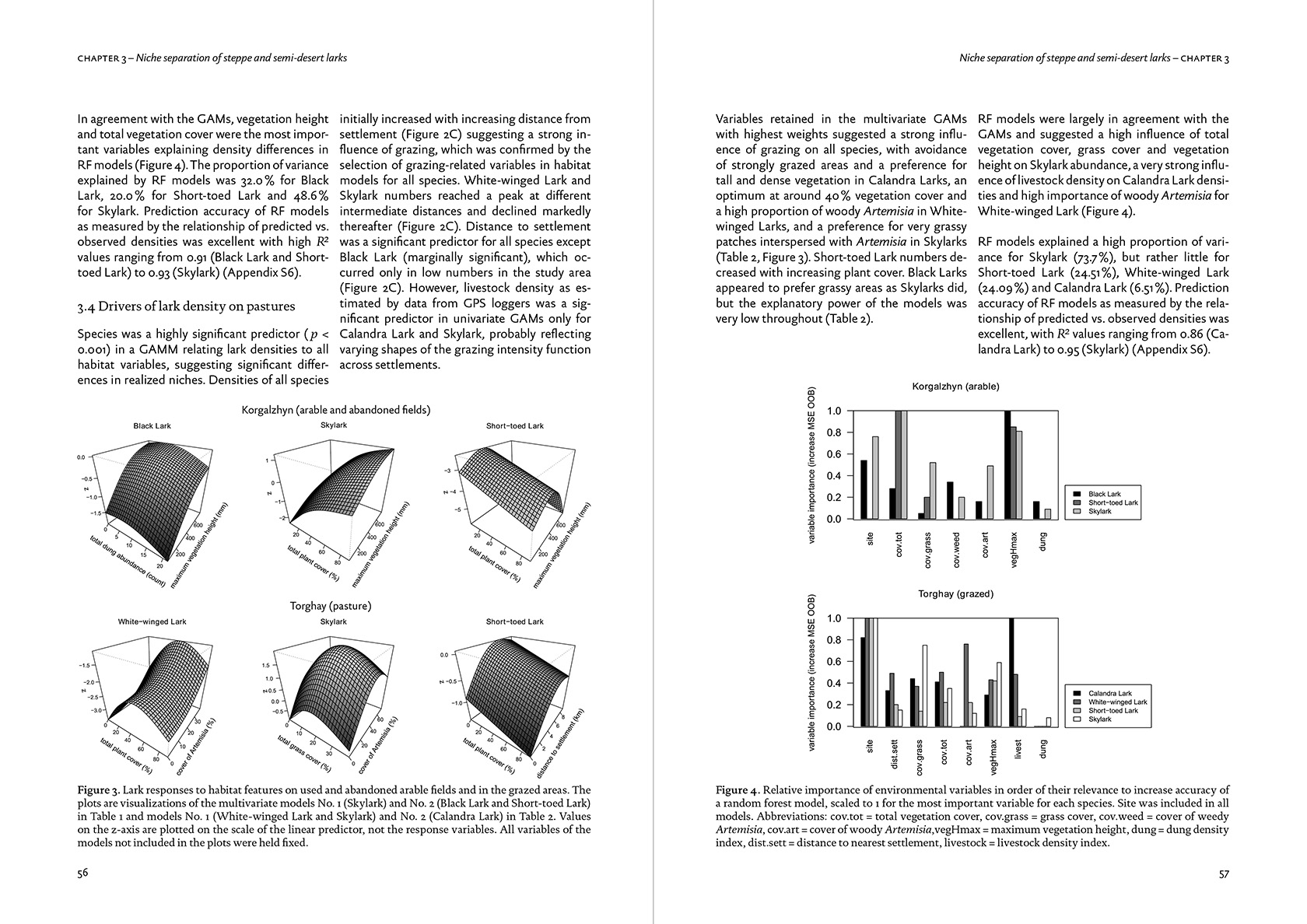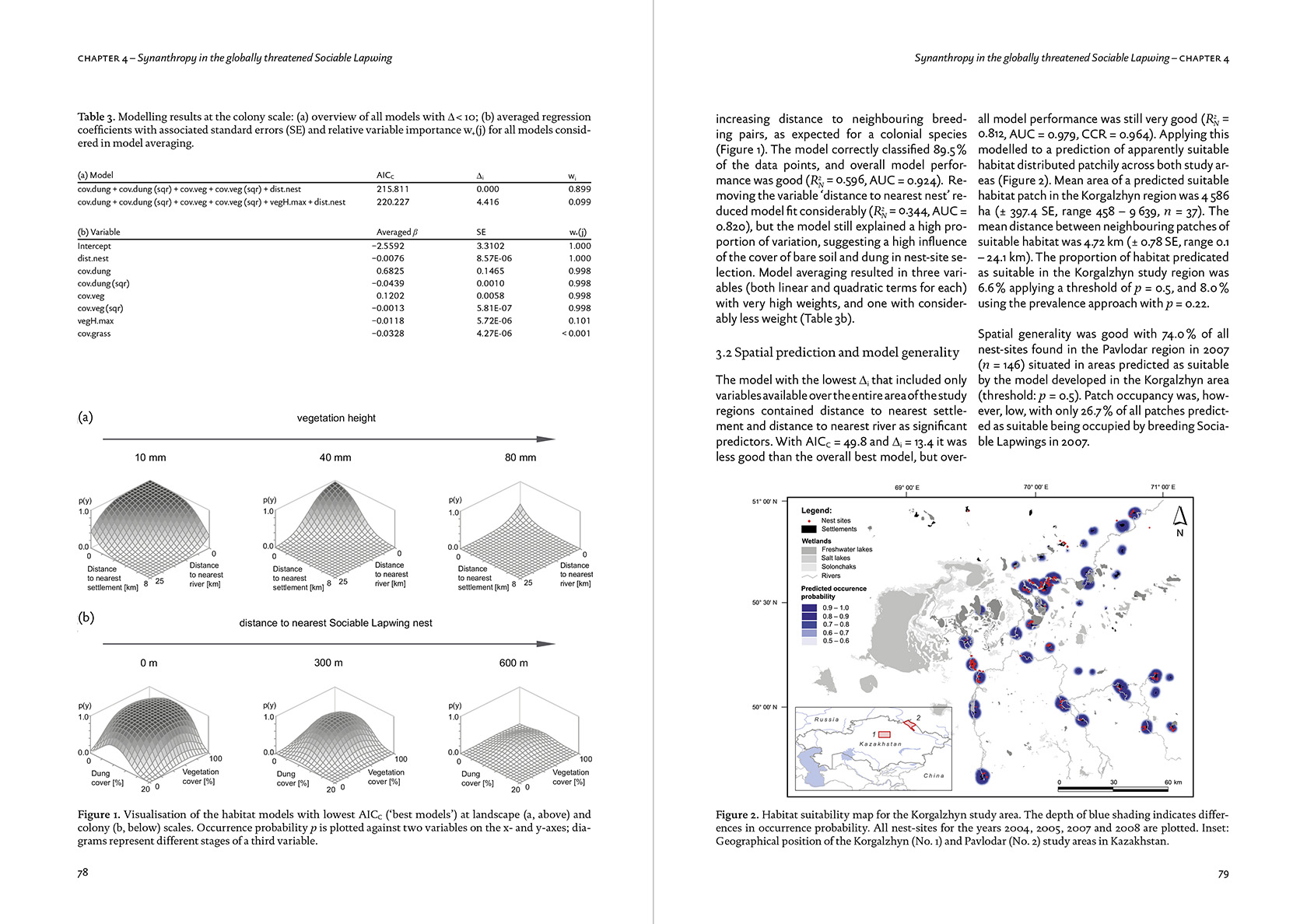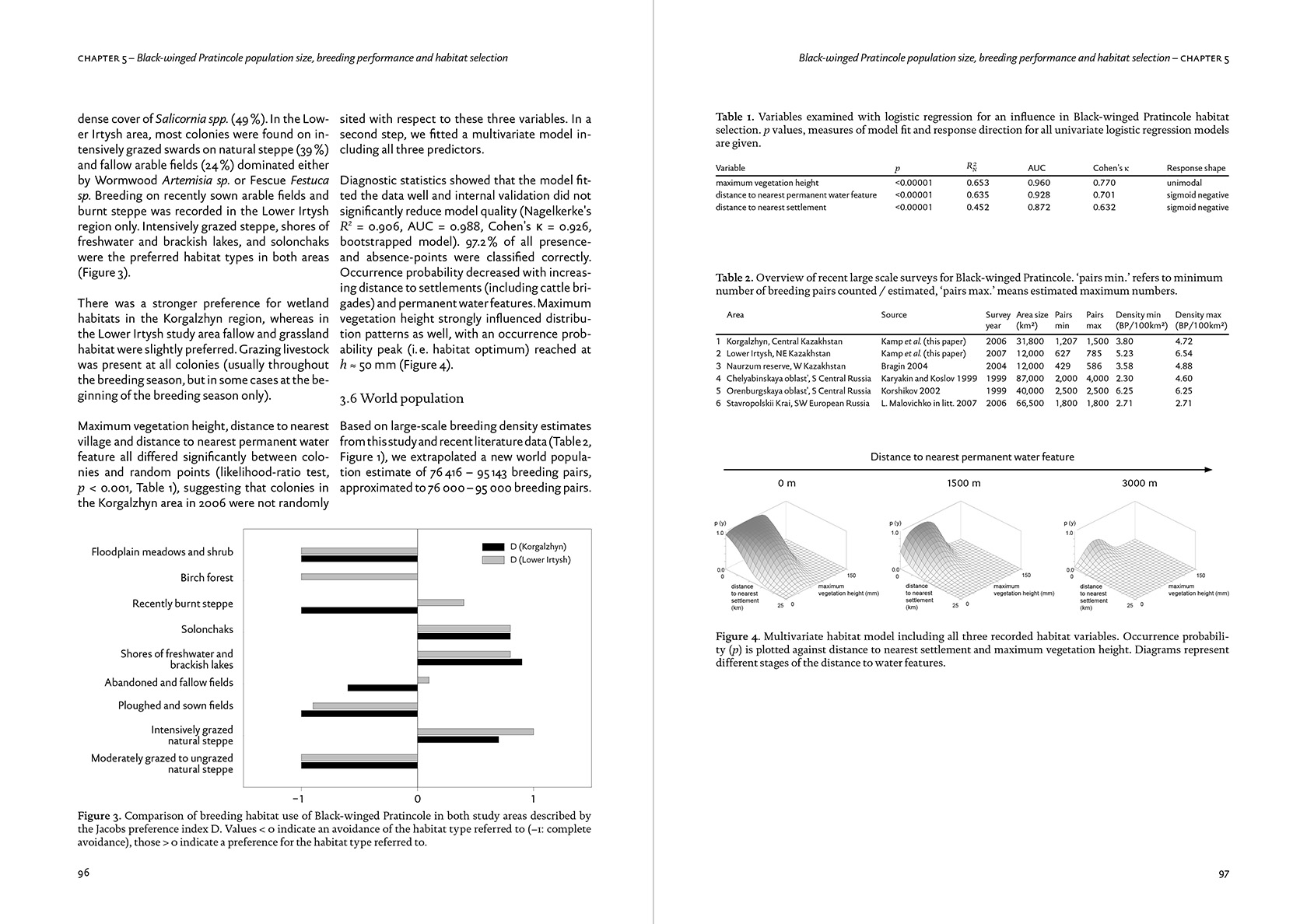[ BUCHGESTALTUNG
Digitaldruck (Laser): Klebebindung mit flexiblem Umschlag (Papier) und Leinenstreifen,
Wissenschaftliche Forschungsergebnisse werden im Allgemeinen viel zu oft präsentiert, ohne dabei der Gestaltung Bedeutung zu schenken. Diese ist jedoch wichtig, um teils aufwändig empirisch erhobene Daten sinnvoll zu kommunizieren. So kann die angesprochene Zielgruppe gegebenenfalls bishin zu fachfremden Interessenten erweitert werden.
Vorliegende Broschüre bündelt Fotos, Diagramme, Tabellen, Landkarten und Texte, die Forschungen über einen Zeitraum mehrerer Jahre und deren Auswertung zeigen. Eine übersichtliche Struktur ordnet die Arbeit. Inhaltliche Einteilung, Aufbau der Kapitel, Querverweise, Fußnoten und Zitate werden klar und funktional präsentiert. So kann der Leser selbst wählen, ob er chronologisch liest oder sich gezielt einzelne Passagen heraussucht.
Eine thematisch verwandte Publikation wurde unter dem Titel »Farming the forest steppe: Sustainable land-use management in Western Siberia« gestaltet [ansehen].
LAND is used in different ways, for example for food production on agricultural land, for raw material extraction and mining, or for the production of fiber and timber in forestry. With their activities, humans have changed land over thousands of years. Land use changes as human societies change. With a global population that has grown to 7.3 million people on planet earth, the impact of human activities on wild nature has been growing fast. This has meant that undisturbed, natural systems are under pressure, wilderness, plant and animal populations decline, and the rate of species extinctions is now far higher than the natural rate. HOWEVER, there are also events that trigger opposite changes that lead to less pressure, resulting in environmental recovery. The collapse of the Soviet Union in 1991 was such an event. The former socialist, planned state economy transitioned to a capitalist, market-oriented economy. This lead to changes in land use, especially in agriculture. These changes were especially pronounced in a landscape known as the ›Eurasian steppe‹ huge areas of natural grasslands stretching from Ukraine to Eastern Kazakhstan. Originally used by nomadic livestock herders, the fertile soils of the steppes had been cultivated into cropland since the 1950s by Russian colonists. POLITICAL change after 1991 meant however that the large Soviet state farms working the land were no longer economically viable under capitalist market conditions. Farming was abandoned over huge areas, leaving millions of hectares cropland and pastures abandoned. The large sheep and cattle herds were literally eaten away as the human population became impoverished. Where man left, nature returned. USING birds as model organisms, we investigated, which effects the changing land-use had on animal populations. We were interested to quantify which species benefitted from abandonment, and which needed some kind of land use. We also investigated how distribution, abundance and habitat preferences of birds changed as the landscape changed. THE results suggest that biodiversity benefitted a lot from lower pressure in human land use: depleted populations of many species could recover. However, there were also ›losers‹: some of the birds were quite happy to live in habitats created by man, and to co-exist with grazing livestock. As so often in life, the results were hence mixed, but we were still able to develop clear guidelines for a landscape management taking into account both the needs of people, and nature.
lesen
